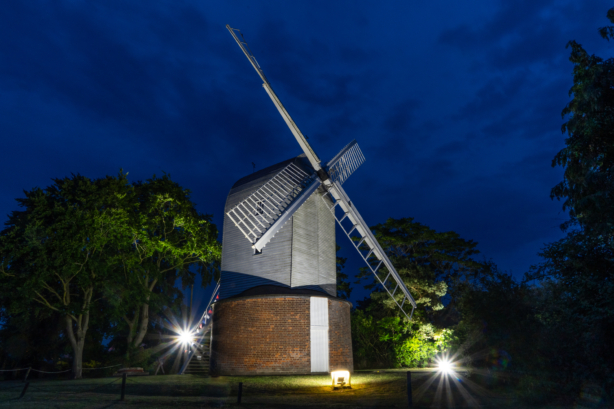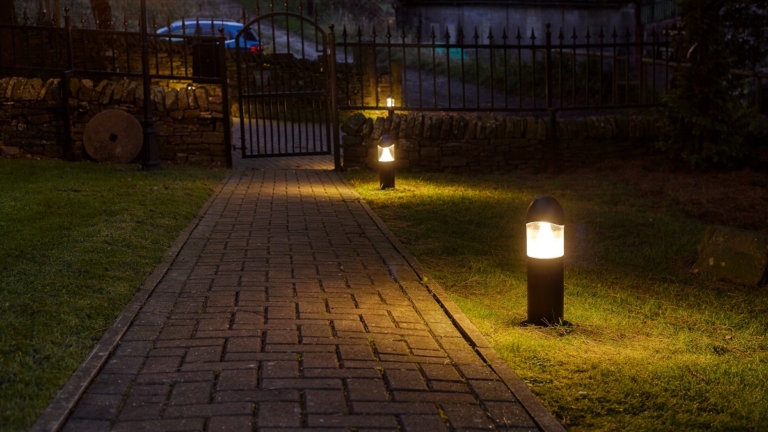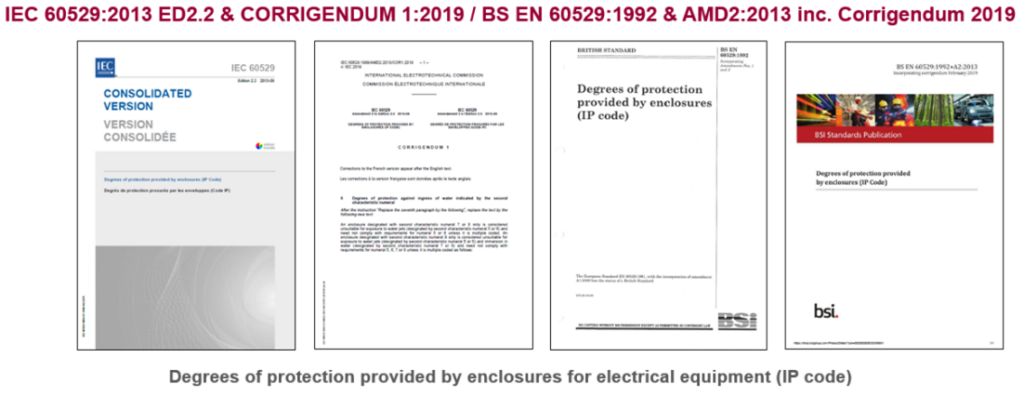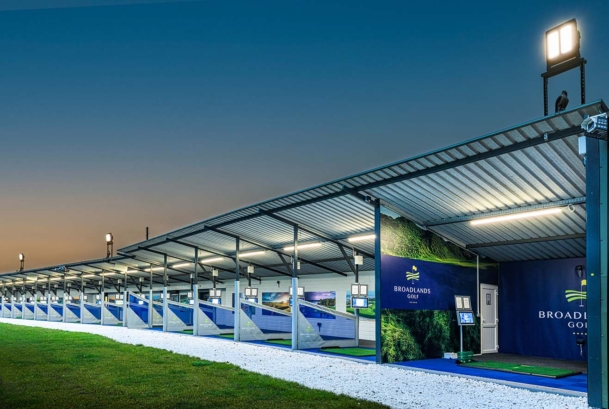
We are a leading manufacturer of quality internal and external lighting products for commercial, industrial and retail applications.
View all productsAt Ansell Lighting we design and manufacture an extensive range of luminaires for a diverse number of sectors and applications. Whatever the shape, purpose or style of your space, we have a lighting solution.
View all sectors & applicationsWe are a leading manufacturer of quality internal and external lighting products for commercial, industrial and retail applications.
Welcome to Ansell lightingWe are here to answer any questions you may have, help you find a stockist or speak to a local member of our team.
OCTO delivers the complete smart lighting package to transform the efficiency and ambience of commercial and residential spaces.
Find information regarding our product warranty, product data downloads and FAQs regarding lighting and technical terms. Here you will find support with training CPDs as well as useful lighting design and LED strip calculators.
Guide to Ingress Protection and IP Ratings

What is Ingress Protection?
When looking to specify luminaires for your next project, you need to consider the IP Rating. But what exactly is Ingress Protection, and which IP rating will be required for the luminaires being proposed? At Ansell, we’ve put together a blog full of the information you need to know about IP ratings and to assist you in confidently navigating through your next lighting specification.
What does Ingress Protection mean?
All electrical devices undergo testing to determine the level of resistance they offer against the intrusion of contaminants, such as solids and/or liquids. Once appropriately tested, the product is given an IP rating, which stands for Ingress Protection, a system from the International Electrotechnical Commission. Sometimes known as the International Protection Code or simply International Protection, an IP rating is a global standard showing how resistant a product is against the ingress or solids and/or liquids.
What standard covers Ingress Protection?
The standard detailing Ingress Protection is BS EN 60529:1992+A2:2013+Corrigendum:2019, this being the UK version of the equivalent standards for Europe and the rest of the world. As an internationally recognised standard, lighting equipment can be sourced from anywhere and the purchaser can be confident the lighting will conform to this or the equivalent safety standards. Each IP rating has a code that provides the level of protection against solids (dust) and/or liquids (water) from entering the fitting.

How is Ingress Protection displayed on equipment?
Ingress protection uses a two-digit code of ‘IP’ rating, where the first digit is given as a number value of between 0 & 6, establishing the level of protection against ingress from a solid object, whereas the second digit is given as a number value of between 0 & 9, establishing the level of resistance to the ingress of moisture. An optional letter and supplementary letter can be added and for further information, see below.
Are there additional letters or numbers for Ingress Protection?
An additional optional letter may be added to the end of the code to indicate the degree of protection of persons against access to hazardous parts and should only be used if such access is at a higher level than indicated by the first numeral or if the first numeral is given as an ‘X’ value.
An additional supplementary letter be also added in exceptional cases and shall conform with the safety and product standards, clearly stating the additional procedures carried out.
What do the numbers and letters of Ingress Protection mean?
Suffice to say, generally, (but not always,) the higher the number the more stringent the protection requirement. The standard defines the protection required to meet the corresponding number and the method of testing for compliance. Each of the two numbers require a different testing procedure. For the optional and supplementary letters, these are only used where detailed within the standard.
The Ingress Protection Table
The characteristics of the first digit of protection against the ingress of solid objects with a brief description as follows:
| IP0X | Non-protected (No rating supplied for protection against ingress of this type) |
| IP1X | Protected against solid foreign objects of 50 mm ∅ and greater (Accidental hand contact with open palm) |
| IP2X | Protected against solid foreign objects of 12,5 mm ∅ and greater (Accidental finger contact) |
| IP3X | Protected against solid foreign objects of 2,5 mm ∅ and greater (Tools and wires) |
| IP4X | Protected against solid foreign objects of 1,0 mm ∅ and greater (Fine tools and wires, nails, screws, larger insects and other potentially invasive small objects) |
| IP5X | Dust-protected (Ingress of dust is not totally prevented, but dust shall not penetrate in a quantity to interfere with satisfactory operation of the apparatus or to impair safety) |
| IP6X | Dust-tight with no ingress of dust (Full protection against dust and other particulates, including a vacuum seal, tested against continuous airflow) |
The characteristics of the second digit of protection against the ingress of water with a brief description as follows:
| IPX0 | Non-protected – (No rating supplied for protection against ingress of this type) |
| IPX1 | Protected against vertically falling water drops (Vertically falling drops or condensation shall have no harmful effects, sufficient that no damage or interrupted functioning of components will be incurred when an item is upright) |
| IPX2 | Protected against vertically falling water drops when enclosure tilted up to 15° (Vertically falling drops shall have no harmful effects when the enclosure is tilted at any angle up to 15° on either side of the vertical) |
| IPX3 | Protected against spraying water (Water sprayed at an angle up to 60° on either side of the vertical shall have no harmful effects) |
| IPX4 | Protected against splashing water (Water splashed against the enclosure from any direction shall have no harmful effects) (Protection against splashing water from any direction, tested for a minimum of 10 minutes with an oscillating spray with limited ingress permitted and with no harmful effects). |
| IPX5 | Protected against water jets (Water projected in jets against the enclosure from any direction shall have no harmful effects) (Protection against low-pressure jets of 6.3 mm of directed water from any angle with limited ingress permitted and with no harmful effects) |
| IPX6 | Protected against powerful water jets (Water projected in powerful jets against the enclosure from any direction shall have no harmful effects) (Protection against powerful jets from a 12.5 mm nozzle directed water from any direction) |
| IPX7 | Protected against the effects of temporary immersion in water (Ingress of water in quantities causing harmful effects shall not be possible when the enclosure is temporarily immersed in water under standardized conditions of pressure and time) |
| IPX8 | Protected against the effects of continuous immersion in water (Ingress of water in quantities causing harmful effects shall not be possible when the enclosure is continuously immersed in water under conditions which shall be agreed between manufacturer and user but which are more severe than for numeral 7) |
| IPX9 | Protection against extended immersion under higher pressure of greater depths (Precise parameters of this test will be set and advertised by the manufacturer and may include additional factors such as temperature fluctuations and flow rates, depending on equipment type)
Protection against high-pressure, high-temperature jet sprays, wash-downs or steam-cleaning procedures (The test is made with a stream of hot water and shall be at a temperature of 80 ± 5°C or for high pressure and cold water jet sprays where the water for the test shall be at a temperature of 15 ± 10°C) |
The Ingress Protection Table – Additional Letter (Optional) & Supplementary Letter (Optional)
The characteristics of the protection with a brief description as follows:
| Additional Letter | Against access to hazardous parts | Supplementary Letter | Information specific to | |
| A | Back of hand (50mm sphere) | F | Oil Resistance | |
| B | Finger | H | High Voltage apparatus | |
| C | Tool (2.50mm x 100mm probe) | M | Motion during water test | |
| D | Wire (1.00mm x 100mm probe) | S | Stationary during water test | |
| W | Weather conditions |
Why is ingress protection important?
Ingress protection is very relevant in that it allows the safe use of lighting equipment within environments where there is a possibility of the ingress of dust particles or that of water into the fitting, which may affect its continued operation over time. This will allow the customer the confidence in purchasing light fittings which are suited to the application into which they are to be installed.
Why is this system relevant?
As to why this system is relevant, if we take a Non-Corrosive fitting as an example, one manufacturer may describe this as ‘weatherproof’ and another manufacturer may offer the fitting as ‘waterproof’. Neither of these descriptions offer clarity as to the level of ingress protection being achieved and both fail to mention any protection against dust, which results in a situation of ambiguity and this is a reason as why the ingress protection system exists.
What are IPX ratings?
Whilst the use of IPX ratings are not an entirely valid solution of ingress protection, the values are widely used within the lighting sector, where the use of an ‘X’ within the IP rating, such as in IP6X denotes that the level of protection required for dust as ‘6’, whereas the level for water is left blank. This in no way means that protection from the ingress of water is irrelevant, however, by stating ‘6’ for dust this would automatically provide some resistance to the ingress of water. If the requirement was say, IPX5, then this denotes the level of protection against water as ‘5’ whereas the level against dust is left blank. A fitting with an ingress protection of IPX5 for water would also offer some protection against the ingress of dust. In both cases, the digit marked ‘X’ would have no specific requirements of protection against either dust or water depending on where the ‘X’ is placed.
Are higher IP ratings always better?
Generally, the higher the number, the greater the level of protection, however this is not always the case, such as with IP66 and IP67. Both have the same level of protection against the ingress of dust, being dust tight, however in respect in the protection against that of water, IP66 provides protection against powerful water jets, whereas IP67 provides protection against temporary immersion.
An IP66 fitting is therefore designed to offer protection against jets of water but may not be capable of offering protection against temporary immersion, whereas an IP67 fitting, protection is afforded against temporary immersion, but may not be capable of affording protection against powerful water jets. The suggested option is to consider the application carefully and match the specification to the luminaire. Do not just accept the highest level of protection as it might fail to meet the specific requirements of the application.
Where can I get more information?
Contact your local electrical wholesale Ansell stockist or Ansell Technical, where, with a wide range of luminaires on offer with various IP protection ratings, we can guide you through a selection process making sure the solution being offered meets the specification for the project.
You Might Also Be Interested In...

